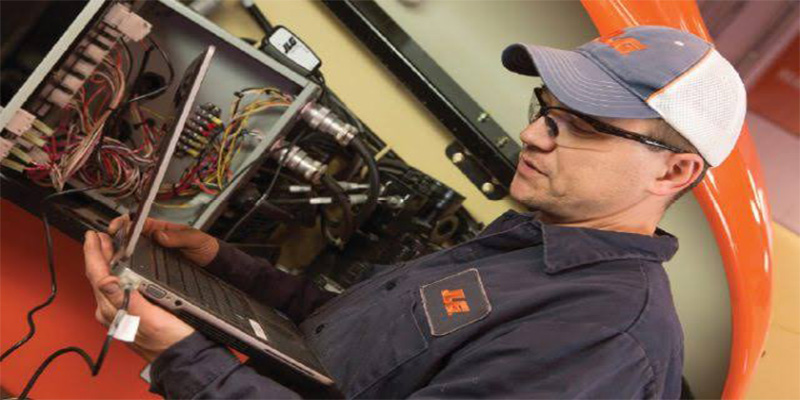When builders require extended work periods in elevated and difficult-to-reach locations, they rely on MEWPs (Mobile Elevated Work Platforms). Over time, two of the most commonly used MEWPs, namely scissor lifts and boom lifts, have gained a reputation for being indispensable on construction sites worldwide.
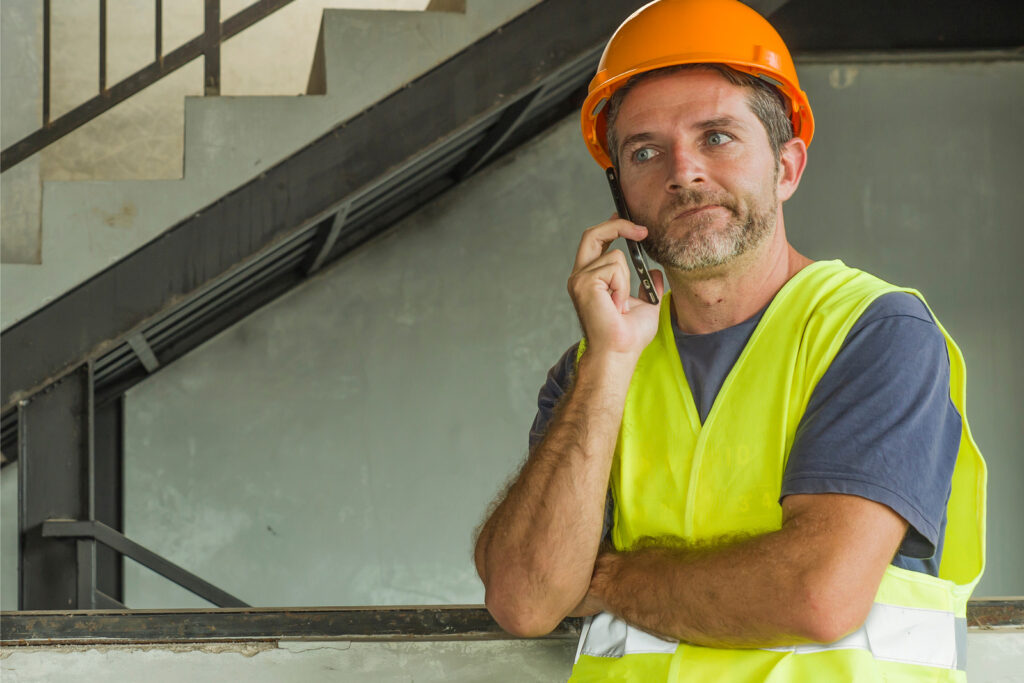
The scissor lift is a sophisticated piece of machinery ideally suited for tasks that involve vertical movement. When contractors need to access elevated areas obstructed by obstacles or when they are working at even greater heights, scissor lifts become the preferred choice. Consequently, it is imperative to conduct thorough inspections to ensure the safety of your workers.
Conducting inspections on scissor lifts is essential to guarantee the safety and efficiency of these work platforms. One of the challenges faced by scissor lift owners is determining the frequency at which these inspections should be performed.
According to ANSI standards, regular inspections must be carried out frequently, with an additional annual inspection. You might find yourself wondering when the last inspection was conducted and how frequently these inspections should occur.
This guide aims to enhance worker safety during scissor lift operations by looking at the requirements for scissor lift inspections.
Inspections
Similar to all heavy machinery, scissor lifts necessitate regular maintenance and examinations to ensure their efficient operation, which in turn assists operators in sustaining productivity levels. Scissor lifts should undergo inspections before each day’s use, during shift changes, and whenever a new operator assumes control of the equipment. Furthermore, the frequency of inspections should be influenced by the machine’s typical operational environment.
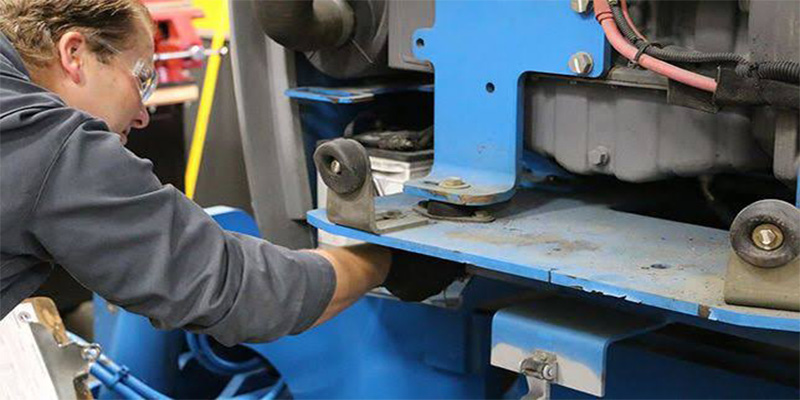
The cornerstone of scissor lift maintenance lies in these inspections. If operators are utilising the scissor lift across multiple shifts daily or subjecting it to harsh environments such as those involving welding or sandblasting, inspections should be conducted more frequently. Ensuring that a scissor lift is in optimal working condition before putting it into operation significantly reduces the likelihood of encountering any issues or failures.
Daily Pre-Use Inspection
Prior to commencing each shift or task, it is essential to conduct a pre-start inspection to confirm the scissor lift’s safe and effective functioning. During this comprehensive assessment, OSHA recommends assessing the following aspects of the scissor lift:
- Scissor lift components
- Lower-level controls
- Charger and battery
- Casters and tires
- Steering and brakes
- Horn, lights, and backup alarms
- Adequate fluid levels (oil, hydraulic fluid, fuel, and coolant)
Certain issues, such as a flat tire, may be straightforward to address, while others, like dim lights, may necessitate the attention of a qualified inspector. To prevent potential safety concerns, consulting the manufacturer’s guidelines is advisable.
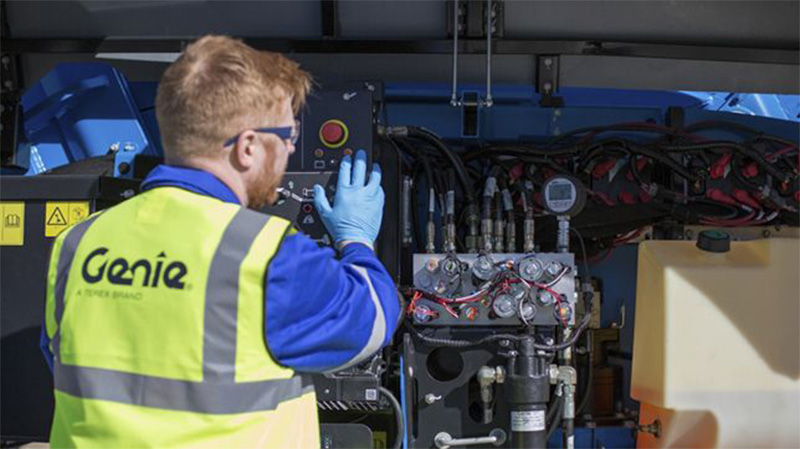
It’s crucial to note that inspecting proper fluid levels entails ensuring that levels are not too low and checking for any signs of leakage.
The pre-start inspection also encompasses an examination of the scissor lift itself. This involves identifying and reporting any hazards related to:
- Working and emergency controls
- Hydraulic, pneumatic, electrical, fuel, and air systems
- Fiberglass and other insulated components
- Mechanical brakes and locking mechanisms
- Checking cables and wiring for any missing components
If any part of either the lift or vehicle exhibits signs of defects or issues, refrain from operating the scissor lift. Instead, remove the faulty lift from service until it has been repaired by a qualified individual.
Work Zone Inspection
A pre-use inspection of the work zone is essential. The operator should visually assess the area in which the scissor lift is to be employed to identify potential hazards. It is critical to exercise caution regarding the following:
- Blind spots, areas with heavy traffic, and narrow aisles.
- Adverse weather conditions, such as high winds.
- Debris and any obstructive objects.
- Ditches, bumps, and slopes.
- Low-ceiling environments.
- The presence of other workers and pedestrians in close proximity.
- Overhead cables and electrical power lines (Ensure a minimum distance of 10 feet from overhead cables and power lines).
- Potholes, uneven surfaces, and drop-offs.
- The adequacy of the surface and its ability to support the load forces imposed by the scissor lift platform.
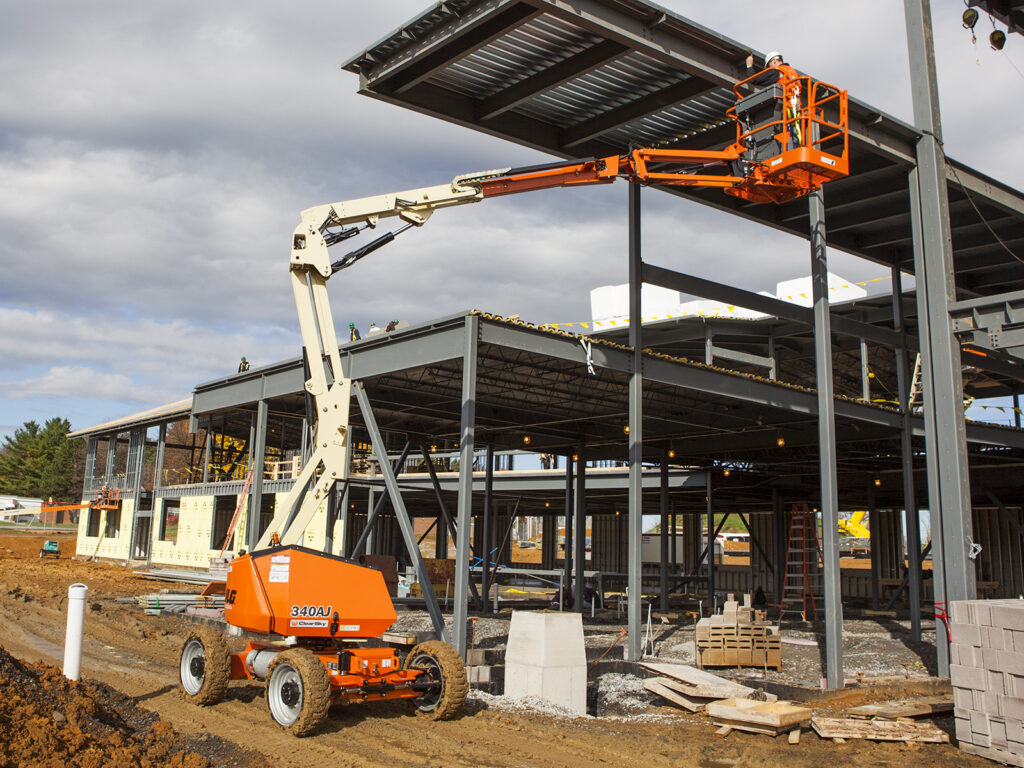
Annual Inspections
An annual inspection of the scissor lift must be conducted, with the interval not exceeding thirteen (13) months from the date of the previous annual inspection. The specific areas of inspection are outlined by the manufacturer, and therefore, they may vary. In general, a certified engineer will assess and inspect various aspects of the scissor lift’s operation, and the inspection should encompass the following:
- Evaluation of all functions and their controls, including speed, smoothness, and motion limits.
- Examination of lower controls, including provisions for overriding upper controls.
- Inspection of all emergency and safety devices.
- Lubrication of all moving components, along with an assessment of filter element(s), hydraulic oil, engine oil, and coolant, as specified by the manufacturer.
- Visual inspection of fundamental components and critical parts such as fasteners, bolts, shafts, and locking mechanisms.
- Verification of placards, warnings, and control markings (as stipulated by the manufacturer).
- Assessment of the emergency lowering system.
Similar to regular inspections, it is imperative that this inspection is carried out by a qualified individual, such as a mechanic experienced with the specific type of scissor lift platform. The scissor lift should not be put into service until any malfunctions or issues identified during the inspection have been rectified.
Note: The date of the last inspection is often documented on the scissor lift. The inspection must adhere to the criteria set by the scissor lift manufacturer for an annual inspection.
Further Inspection Information
Inspections play a vital role in preventing incidents or injuries involving scissor lifts. Any identified issues noted during an inspection must be promptly addressed. For your safety, please adhere to the following guidelines:
- Any scissor lift not in a safe operating condition must be taken out of service.
- Repairs to the fuel and combustion systems of scissor lifts, especially those posing fire hazards, should be carried out only in designated repair areas.
- When conducting repairs involving the electrical system, disconnect the battery.
- Ensure that all parts used for scissor lift repair and maintenance are approved by the manufacturer.
- Refrain from filling fuel tanks while the engine is running.
- Spills of oil or fuel must be thoroughly cleaned, and the fuel tank should be replaced before restarting the engine.
- Employ proper Personal Protective Equipment (PPE) during required maintenance.
When it comes to changing or charging the battery, it should be performed in an intrinsically safe environment with adequate ventilation. Facilities should be provided for:
- Flushing and neutralizing spilled electrolyte.
- Fire protection measures.
- Protection of the charging equipment.
- Availability of emergency eyewash in areas where electrolyte is added to batteries.
- Implementation of precautions to prevent open flames, sparks, or electrical arcs in battery charging areas.
- Provision of suitable PPE.
Scissor lift inspections should occur under the following circumstances:
- Electrical contact, such as contact with energized power lines.
- Sudden, intense loads on critical parts (shock loads), such as those encountered during tip-overs or impacts with solid objects, or when absorbing a fall arrest load.
- Damage or failure due to overloading and excessive stress.
- Any situation where potential injuries may occur due to factors that could weaken any part of the scissor lift or reduce its stability.
- Change of ownership, unless the previous owner can provide a comprehensive service history of the scissor lift, including service and maintenance records.
Maintain safety and compliance by ensuring that your scissor lift equipment undergoes regular inspections and stays up-to-date on maintenance. Your safety and that of others depend on it.
